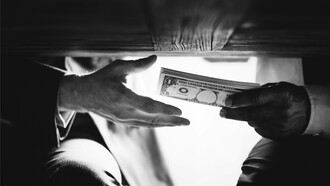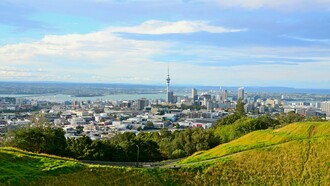The ominous sense of fear and anxiety that spread through the United States during the 1930s appears to be reoccurring today. Understandably during the years of the Great Depression, financial and social insecurity were the norm. Unemployment and breadlines reflected the sense of self-preservation especially among whites who considered themselves to be pure Anglo-Saxons.
Once again, there is uncertainty about where the nation is heading. A sense of insecurity grows in regard to one’s anointed place in the American social hierarchy, and an anger grows among many Americans about the changing American populace and its impact on the national culture. Racist, religious, and xenophobic rhetoric fuels increasing numbers of hate crimes directed toward African Americans, Hispanics, Muslims, Jews, and immigrants.
The same type of rhetoric of hatred, fear, and hysteria that is pervasive in the United States today produced one of the most vicious white supremacy groups in the United States during the 1930s. It was called the Black Legion, an organization not written about in most American history texts. Because so many are unaware of authentic American history, they will have no knowledge of this group. A lesson from 1930s American history is appropriate at the moment.
What was the Black Legion?
The Black Legion, an offshoot of the Ku Klux Klan, was a white supremacist militia formed in the midwestern United States. It operated during the Great Depression of the 1930s. Detroit had been a strong center of KKK activity in the 1920s, and in 1931, a chapter of the Black Legion was formed in Highland Park, Michigan by Arthur F. Lupp, Sr. Targets of the Black Legion not only included blacks but Jewish and Catholic immigrants from eastern and southern Europe, as well as labor unions, and socialists.
The Black Legion was made up largely of native-born white Midwesterners, many of whom had migrated from the South seeking new economic opportunities in the automobile industry in Detroit. By 1930, nearly eighty percent of native-born whites in Detroit had migrated there from the South. Mostly unskilled, they were alienated by having to compete for jobs and housing with immigrants and African American migrants from the South. In certain ways, Detroit was not an especially welcoming city to whites regarded as “hillbillies.” Stereotypes were held of them as being simple, prideful, and undependable as they would take extended leaves to go back South to visit. Displaced from their rural culture, these men compensated their feelings of inferiority with a sense of white superiority .These whites who were easily attracted to and recruited by the Black Legion were said to have “a strange sense of class or rank, afraid they would be asked to do something below their position.”
The Black Legion operated in gangs that brutalized their perceived enemies, committed arson, and murdered to enforce their idea of what America should be and what it should look like. From 1933 to 1936, when they were finally brought to justice, they were rumored to be responsible for as many as 50 unsolved murders. What is the reason for the general sense of tenseness, fear, and anxiety among many Americans today? Can this incivility degenerate to the extent that it did during the 1930s? Can the political divisions, hate speech, and vicious stereotyping of different racial, ethnic, and religious groups lead to the establishment of fear-based social status militias with motives similar to those of the Black Legion? Do we have groups of native-born whites (even those from previous immigrant groups) who are so insecure and fearful of their place in American society that they resort to violence?
These are difficult times in the United States, the sense of anxiety is palpable. It is crucial to the future of this nation that the hatefulness and fear mongering cease. The greatest threat to our nation’s security comes not from Russia, Iran, North Korea, or ISIS, but from divisions within.















